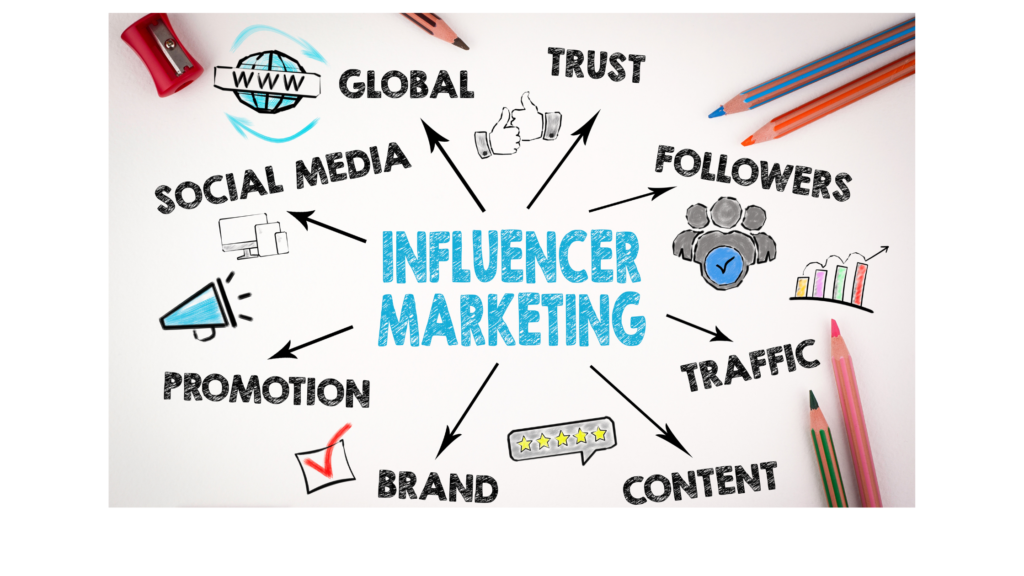Influencer marketing can increase your brand awareness and sales when planned well.
Because influencers are industry experts with dedicated followers brands like to partner with them to achieve their specific marketing goals.
However, unlike what you may read elsewhere, influencer marketing is not as simple as sending a popular Instagrammer a message asking them to showcase your products.
If you do so, you’ll likely be ignored.
Therefore, it takes time and effort to build a campaign that can get you the results you want.
In this post, we make it simple and layout the necessary steps for a successful campaign.
Step 1: Identify Your Goals
The first step to your influencer campaign is to identify clear goals to provide yourself with a clear idea of what you want to achieve and how the program will benefit your business.
Remember, influencer marketing should be part of your overall marketing strategy, and the goals should align with your other marketing initiatives ideally working in tandem.
For example, if your marketing goals are to increase brand awareness, that should be a goal of your influencer marketing campaign. If you want to drive registrations to a webinar, be explicit.
You have to be clear so you will craft a strategy that gets you there.
Now let’s dig a little deeper:
You should also identify micro-goals, which include numbers to help you measure your progress.
Don’t give up if you don’t achieve every metric you set up for yourself, but it will give you something to measure progress.
For example, if you want to get more sales for webinar registrations, you could begin an influencer campaign to try and drive to a specific number.
Once you have a clear baseline, you can aim to find new ways to improve your ROI.
Step 2: Define Your Influencers
An influencer marketing mistake many inexperienced businesses make is targeting any influencer, no matter who their target audiences are or their niche.
Identifying the right influencers for your campaign is key to helping you increase your ROI and make more sales. To find the best influencers for your campaign, you’ll need to consider the following:
Audience: No matter how large or small an audience is, it should be engaged.
If you find an influencer with tens of thousands of followers but no likes or comments on their posts, they don’t have an engaged following, which means few people are clicking on their posts.
Not only that, but if you find influencers with a low engagement rate, their followers might be bots, who won’t take action on a post.
Relevance: An influencer should be relevant to your industry.
For example, if you sell supplements, you shouldn’t reach out to a pet influencer because their audience likely won’t be in the market for supplements.
Instead, supplement brands can reach out to health and fitness influencers who have a more engaged audience likely to take action on a post.
Voice and Values: Any influencer you work with should have the same values as your business.
You should never work with an influencer who might be bad for your reputation just because they have a large number of engaged followers.
Additionally, their tone of voice and style must match your brand.

Step 3: Find the Right Influencers
Finding the right influencers for your campaign is easy, but identifying the right ones for your campaign can be time-consuming.
We recommend using influencer marketing software to help you find, vet, and hire influencers in a fraction of the time it takes you to do it the manual way.
However, there are ways to easily find influencers without spending money on software.
Use Hashtags
You can easily find influencers by using popular hashtags that someone might use to describe your business.
In the same way that someone might type keywords into a search engine, you can do the same on social media to find posts and influencers in your niche.
For example, if you’re looking for B2B influencers, you can search for industry-relevant hashtags.
Send Out a Call for Influencers
Instead of doing all the work yourself, you can ask that influencers apply to be a part of your program.
If you want to do this for free, you can create a Google Form and ask prospective influencers provide information about their:
- Audience size
- Audience composition
- Engagement rate
- Niche
- Name
- Rates
Once you have a list of influencers who want to work with you, you can start researching their social media profiles to find the ones who work best for your campaign.
Ask for Recommendations
Influencers frequently collaborate with other influencers.
Once you find an influencer you enjoy working with, you can let them know you’re extending the program and looking for more quality influencers to work with.
They are often willing to recommend others and help you get them interested in being part of the campaign.
Step 4: Connect
Once you have a list of influencers you want to work with, it’s time to start reaching out.
You can reach out to them directly on social media, but you may also be able to find their email or preferred method of communication.
Many influencers are bombarded with emails from brands, so they might have information on their profiles for how to get in contact with them.
Reaching out doesn’t have to be difficult. All you have to do is let them know about the campaign you want to run, your budget, and why they should join you in your efforts.
Remember, many influencers have set rates, so if your budget doesn’t align with what they want to be paid, you might have to look elsewhere.
You can (and should) negotiate with influencers to get the best rates.
Step 5: Incentivize Influencers
Believe it or not, not all influencers need your money.
Many of them will be happy to work with brands with goals and missions that align with their own.
For example, if you donate a percentage of proceeds to pet shelters, more influencers might be willing to work with you for free to get the word out about your business.
Additionally, if you have a small budget, you can offer influencers a free product and a product to give away to their followers.
Top influencers might not agree to these terms, but micro-influencers might be willing to work with you for these types of incentives because they understand they don’t have a large enough following to be compensated with thousands of dollars.
Step 6: Measure Results
After your influencer marketing campaign has come to an end, measure the results.
If you’re not using software to help you manage your campaigns, this can be difficult.
You can always ask your influencers to send you snapshots of the post analytics to see how well they performed, but you’ll have to include that in your contract with them to ensure they do it.
If you’re not using software to help you manage your campaign, you can give influencers a coupon code to use on your website to track sales from the campaign.
When measuring results, think back to your goals from Step 1.
If your goal was to increase brand awareness, you can measure website traffic and the number of new social media followers and start finding new ways to increase your return on investment through influencer marketing.
By Matt Casadona
Matt Casadona has a Bachelor of Science in Business Administration, with a concentration in Marketing and a minor in Psychology. Matt is passionate about marketing and business strategy and enjoys San Diego life, traveling, and music.


The point about setting clear goals in Step 1 is spot on. Setting measurable objectives is key, but what metrics do you think are the most important for evaluating the success of an influencer marketing campaign?
I think it’s pretty clear in the article. It depends on your objective. Brand awareness is a bit squishy, so you’ll likely use the metrics you usually would to measure success. For lead gen activities like webinars, ultimately, what you want to consider is how many quality leads it generated.